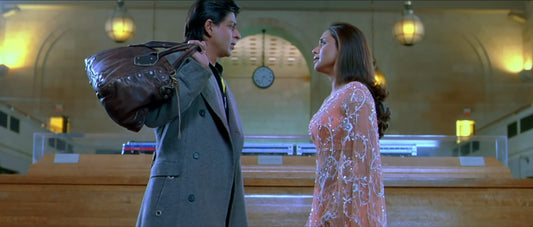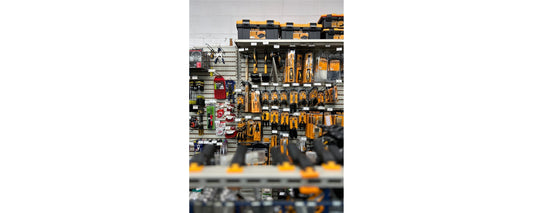It’s a rainy Sunday afternoon, and Chris Della Ragione has been lowering the needle over jazz and reggae records, filling Elm City Sounds with warm, analog music because he suspects the customer with whom he’s speaking—or perhaps every customer in the room, absorbed in the stacks but with their ears up—will like it. (He has 15 or so years in and around the music business, much of that time as a disc jockey at house parties and on college radio, so he’s probably not wrong.) He’s now explaining the process by which people become record collectors. “A lot of people come in and say, ‘Do you have this?’ Usually then they’ll take the place in and realize that there’s”—and here is where a customer squatting before a stack of new arrivals interjects: “better shit than what they were looking for.”
Nine months after his grand opening in Westville, Della Ragione likes that his customers occupy different places on the collecting continuum. “It’s nice because [the shop] exists on different levels for people. It’s like a movie with different meanings.” The customers are as varied as the records in his bins. Earlier that day, he had set up a woman he estimates to be in her 80s with some Doors records, plus a turntable to play them on. The prior week, he hosted a group of collectors from Japan. “They did some damage,” says Della Ragione, meaning they bought a lot of obscure, expensive vinyl. But the process by which you become an obsessive starts with coming in for an un-obscure copy of, say, Fleetwood Mac’s Rumours or Van Morrison’s Moondance or Joni Mitchell’s Court and Spark. “It’s good to have things in mind and use that as a guiding point. But record shops aren’t really [about] getting things when you want them. So you need to browse, and eventually you’ll find what you’re looking for. But most likely you’ll find other things you didn’t even know you wanted.”
sponsored by
Della Ragione himself began collecting by virtue of his love of hip hop and his early patronization of Fat Beats, a legendary record store in lower Manhattan that specialized in the genre. According to Della Ragione, the shop was a dynamic, borderless place where many of the employees were also artists as well as mentors to artists and customers alike. Della Ragione made one such friend—a producer—in the early 2000s. “He taught me really how hip hop was made. Sort of showed me where all those samples came from. A lightbulb went off in my head, and from then on I was off to the races as far as looking for samples and records. Really the collecting just went on overdrive.”
Chris gestures to a tidy grid of obscure mint jazz records on the wall behind him. “Most of these records here have some sort of hip hop value. Although it’s a jazz record, a lot of the ones that I selected here have been sampled for other hip hop records, or have the potential to be sampled. Whether it’s a certain sound that lends itself to hip hop, whether it’s the tempo, the time signature, early electronics.”
This kind of record collecting is unique to hip hop, beginning, says Della Ragione, with the artists themselves. Looking for quality music to sample in the ’80s and ’90s, they naturally started with the records they had inherited from their parents, including what Della Ragione characterizes as the lowest-hanging fruit: James Brown. But the spirit of one-upmanship led artists to dig for obscurer and obscurer records.
The soul, funk, reggae and jazz collection at Elm City reflects a love for those genres that was instilled in Della Ragione by his favorite soul, funk, reggae and jazz collectors—namely, the artists who sampled old records and created something new. “A Tribe Called Quest and De La Soul and Wu Tang—all these groups. The quality of the records that they were using to make
In the early 2000s, Della Ragione began using samples and samplers to produce his own beats. Eventually, he ran his own independent hip hop label, which is what first brought him to New Haven. His flagship release was a compilation of late ’80s/early ’90s cassette and DAT recordings from Dooley-O and other New Haven hip hop luminaries. Della Ragione says, “But it was right at that time when the industry was in freefall, right around Napster, the decline of all physical media. Downloads were coming, and the industry didn’t know what was up, what was down.” His label—Sound Of Dissent—lasted a few years, after which Della Ragione left the music business.
He came back upon noticing that the worldwide trajectory of music buyers away from physical media and toward downloads was reversing. Vinyl was outselling downloaded music in some quarters. “It’s nice to see that the public—whom I’d lost a little faith in—was willing to kind of say, ‘No. We want something more tangible. We want to be able to hold these things.’” The other thing that had him looking for vacant shop space from New York to the Connecticut shore was his own record collection. “Honestly this store is kind of therapy for me. I was already at an unhealthy place of collecting. If you came to my house, then you would know what made it unhealthy. Records everywhere. Even if they’re all great, there’s no way that you’re listening to them all.”
His old skills as a collector are the exact skills that apply to stocking the shop. He estimates his stored inventory—in the back of the shop, in his house, in a friend’s garage—at 30,000 records. If he has, say, two copies of the Beatles’ Revolver on display, which might sell for $10 or $20 apiece, he probably has triple that number ready to replenish them. Floor-level bins may feature a less gently used copy for $5 or less. I bought a perfectly playable Sparks record, inside a jacket the prior owner had evidently used to test a ballpoint pen, for $2. Toward the opposite end of the continuum—both for collecting and for investing—is a precious mint copy of Song For The Pterodactyl by Pop Workshop (a mostly Polish fusion project based in Sweden, featuring great American jazz drummer Tony Williams) for $150.
For Della Ragione, finding rare dinosaurs like Song For The Pterodactyl required, among other things, knowing where to look. Della Ragione describes “certain basements” throughout the five boroughs where record shops might once have stood. “Or a Jamaican health food spot. People called them honeypots. You lift open a hatch on the floor, and there would be a whole basement full of records that had been a time capsule since the ’70s. Now most of them are gone.”
But simple persistence also pays, even above ground. One of Della Ragione’s favorite acquisitions is actually called Time Capsule. It’s a private recording by jazz keyboardist Weldon Irvine, valued between $1000 and $2000. “I was at a spot—a junkshop—that I’d been to regularly. And I’m looking through the same 2,000 crappy records. Halfway through them, I’m like, ‘What are you doing?’ I’m really wasting my time. ‘Okay,’ I say, ‘I already started. Just be thorough. Go through every single record here.’ And lo and behold. The last 20 records. Perfect copy. And it’s autographed by him on the back.”
At Elm City Sounds, you won’t find a $2,000 record for a penny on the dollar. Then again, you won’t have to sift through 2,000 crappy records to find it.
Elm City Sounds
24 Fountain St, New Haven (map)
Wed-Sun noon-6pm
(203) 387-8293 | elmcitysoundsct@gmail.com
www.elmcitysounds.com
Written and photographed by David Zukowski.








